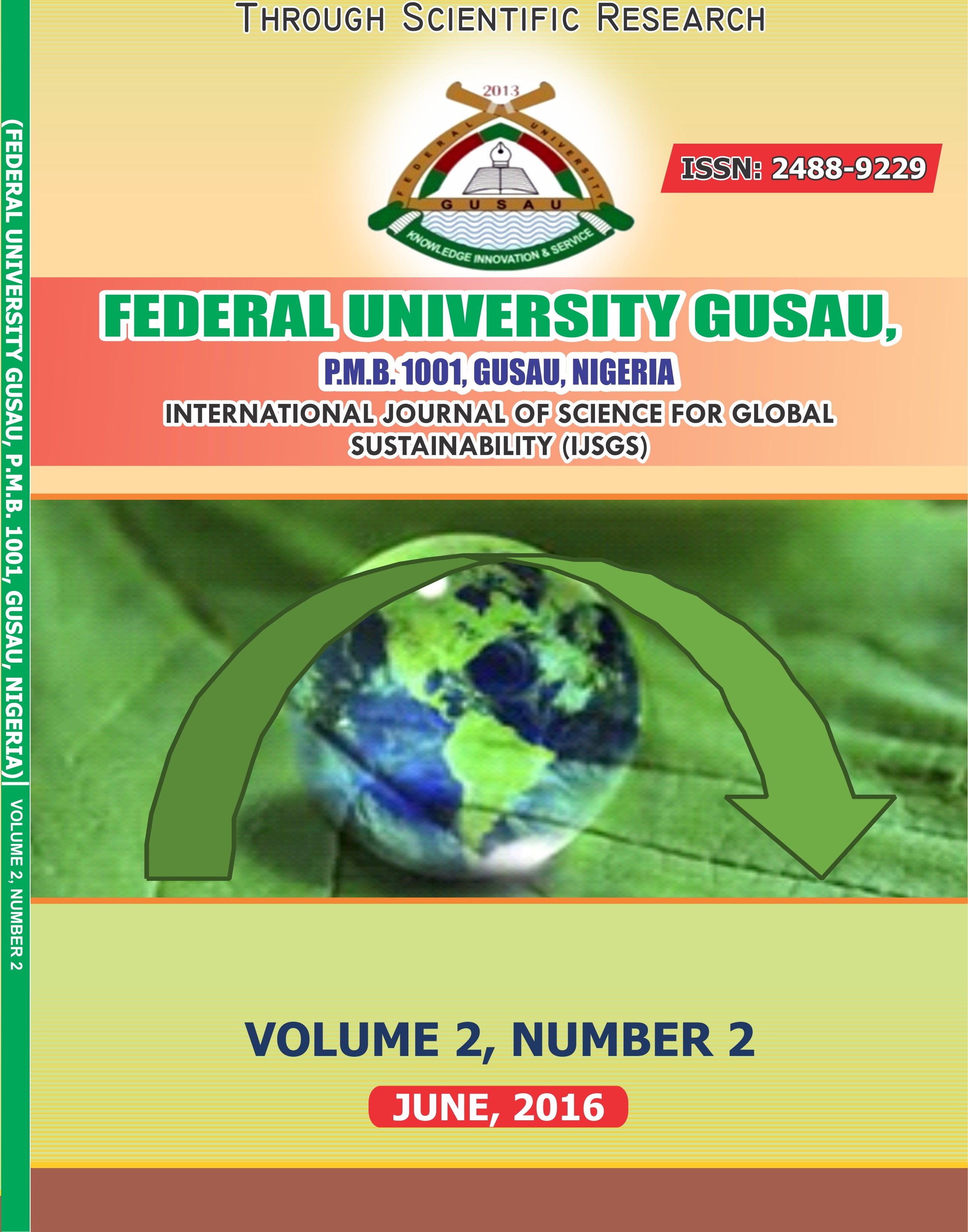Spatial Vulnerability Assessment of Flood in Niger State
Keywords:
Flood Vulnerability Map, Digital Terrain Model, SRTM Image, Curve number, Model and Quantum GISAbstract
This study used remote sensing applications in Flood Vulnerability Assessment of Flood in Niger State. Shuttle Radar Topographic Mission Satellite Image, Soil analysis, curve number flood model and Quantum GIS software were used to provide baseline information for the monitoring of flood disaster in Niger State. The SRTM image was used to analyse proximity of Niger State to rivers and create a Digital Terrain Model of Niger State based on elevation. Soil analysis was conducted to determine the types of soil in different locations in the state, using integrating curve number model to calculate run-off values. The research revealed two major causes of flood in Niger State namely primary causes such as soil type, rainfall intensity and duration; and secondary causes which include reservoir operations and building of structures along flood plains. Out of about 76,000km2 covered by Niger State, 40% (30,000km2) was found to be highly vulnerable, 45% (34,000km2) was moderately vulnerable and the remaining 15% (11,400km2) had low vulnerability to flood. The study advocates evolvement and enforcement of an environmental policy to curtail unstainable agricultural activities on and discourage wanton destruction of environmental sensitive areas for unapproved developments.












